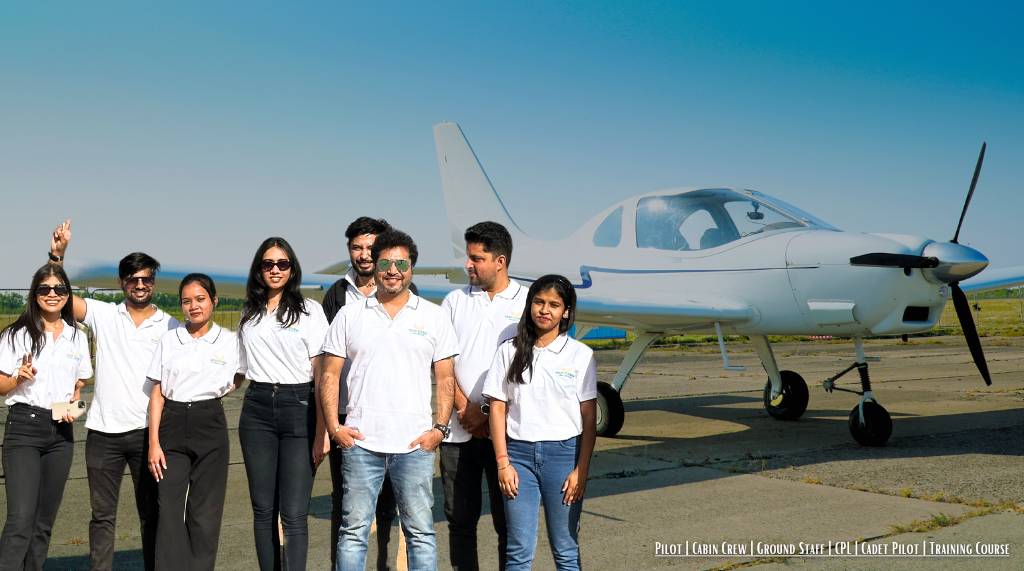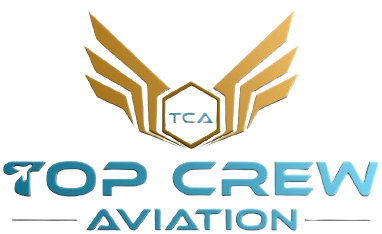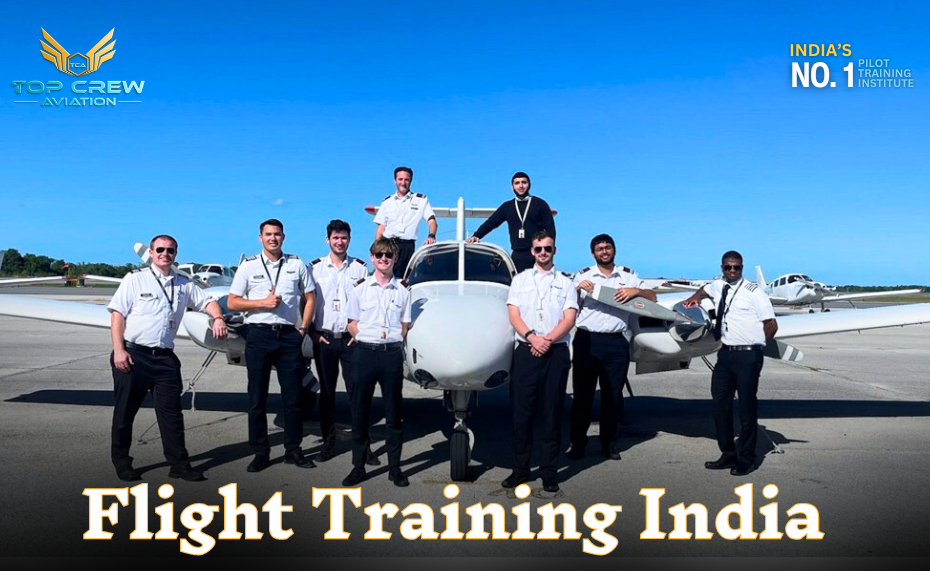Hi Friends, learn how flight training works and what you need to know to get started in this article. Many people dream of being pilots in India. Who doesn’t want to fly? Pilots need to learn how to control an aircraft. They must know how to navigate the skies. They also need to understand the weather patterns. Flight schools help students get this training.
Do you know that the world record for the longest continuous flight is 64 days, 22 hours, and 19 minutes? Robert Timm and John Cook set this record for flying non-stop, landing on February 7, 1959!! Or is the world’s shortest flight only 2.8 km? Whether you aim to fly for long hours or short distances, flight training in India is essential.
What is Flight Training?
Also known as pilot training, flight training is the process through which candidates learn to pilot an aircraft. Along with theoretical knowledge, candidates gain the necessary airmanship skills and experience to fly an aircraft. Comparing flight training to learning to drive a vehicle is a misleading analogy, as pilots operate in the sky (three dimensions) and require more in-depth knowledge and motor skills.
Flight Training Eligibility in India.
The candidate must meet the following eligibility requirements for piloting in India. He or she must be at least 17 years old. He or she must have completed your 10+2 education in physics and mathematics with 50% marks. Possession of a medical fitness certificate as per DGCA norms is a must.
Note:- The candidate needs to understand and speak English well. This is important because English is the main language in aviation. Candidates will need to read, write, and speak English.
Types of Flight Training In India.
Ground School: Ground school is the first step in flight training. Students learn the basics of topics like aerodynamics, weather, and flight rules for flying training.
Pre-Flight Checks: Before flying, pilots must inspect their aircraft. This is called a pre-flight check. Pilots check the outside and inside of the plane. Checking the fuel level and the condition of the wings and engines is important.
Solo flight training: Students practice flying in a simulator, which is a machine that mimics real flight. Simulators help students learn how to control an aircraft. They can practice takeoffs, landings, and handling emergencies.

In-Flight Training: An instructor accompanies them on these flights. Students practice basic manoeuvres, like turning and climbing. They also learn how to navigate and communicate with air traffic control. In-flight training helps students gain confidence and skills.
Solo Flights: After enough practice, Solo Flights. This means flying alone without an instructor. They show that the student has learned the necessary skills to fly safely. Students must complete several solo flights to gain experience.
Cross-Country Flights: Cross-country flights are long-distance flights. Students learn to plan and execute these flights. They must navigate to different airports and manage longer flights. It is an essential part of becoming a licensed pilot.
Night Flying: Night flying is another important role of flight training. This includes taking off, flying, and landing at night. Night flying requires different skills and more attention to instruments.
Instrument Training: This is important when visibility is poor, like in clouds or fog. Pilots rely on instruments to navigate and control the aircraft. This training helps pilots handle difficult weather conditions and ensures safety.
Emergency Procedures: The candidates learn in this training practice what to do in case of an emergency. This includes engine failures, fires, and other problems. The candidate learns how to handle emergencies.
Flight Review and Testing: Before getting a pilot’s license, students must pass several tests. These include written exams, flight tests, and oral exams. Instructors review the students’ skills and knowledge to ensure they are ready. Passing these tests is necessary to become a licensed pilot.
Note:- Even after getting a pilot’s license, training continues. Pilots must keep their skills sharp and stay updated on new rules. They must complete regular training and check flights. Overall, to get the CPLs in India the Candidates need 200 hours of flying training.
Types of Planes in India.
Cessna 152: Popular because of its small size, ease of flying, and affordability, the Cessna 152 is used during initial flight training. Its simple design and light weight make it perfect for beginners, to learn about aircraft control and movements.
Cessna 172: Another sought-after aircraft for beginner’s flight training. Its pilot-friendly behaviour makes it more popular with beginners. Offering high stability and good visibility allows student pilots to recover from minor errors.

Piper Seneca V: The Piper Seneca V becomes ideal for training with its advanced systems and multi-engine capabilities. Flight schools prefer it because it’s well-balanced, making it perfect for teaching students how to manage twin-engine aircraft. Its modern avionics and reliable performance provide a realistic training experience, preparing students for more complex flying situations.
Flight Training Cost in India.
Flight Training Costs can vary a lot in India. This depends on the flight school and country. The type of aircraft used and the training duration of the course also matter. Some schools might offer packages that include accommodation and meals. It usually ranges from 30 to 40 lakh INR. Financial aid or loans are sometimes available. Always check what is included in the price. Comparing different schools can help the student find the best deal.
Types of Pilot Licenses.
There are different types of pilot licenses in India. The first one is the Student Pilot License (SPL). You need this license to start flight training. After that, you can get a Private Pilot License (PPL). This license lets you fly for fun. If you want to fly for a job, you need a Commercial Pilot License (CPL). To get a CPL, you need more flying hours. You also need to pass more exams. Some people go further and get an Airline Transport Pilot License (ATPL). This license is needed to be a captain on a large airplane.
SPL: A Student Pilot License is the basic license required for flying an aircraft. Under the guidance of the flight instructor, students learn the basics, accumulate knowledge, and gain experience operating the aircraft. Here, students build their foundational skills for an advanced license. After SPL, students aim for PPL or CPL
PPL: The Private Pilot License is given to students with some flight experience. Students need 40 to 50 hours of flight training to obtain this license. With a PPL, pilots are allowed to fly privately for personal enjoyment, image mapping, or surveying. However, they cannot receive compensation for their flying. After PPL, students aim for CPL.
CPL: Commercial Pilot License is a step up from PPL and is also a sought-after license. This is given after students have enough experience and cleared other qualifications. To qualify for a CPL, candidates must have flight experience, typically around 200-250 hours, and must pass several advanced training modules and exams. With CPL, students start to get compensated for flying services, making it an important license for those who aim to pursue a career as professional pilots.
Read more:- Pilot License Difference
Career Opportunities After Completing 200-Hour Flight Training.
- Flight Instructor: As an instructor, they teach students how to fly aircraft including safety and technical skills. They can apply to flight schools.
- Airline Pilot: Simply known as Pilot. They fly for airlines. With experience, they get a salary hike. On average, they get INR 150,000 monthly. Depending on airline policy, there are other benefits as well.
- Air-Ambulance Pilot: This is a very critical role, as sometimes pilots race against time. Similar to road ambulances, there are also air ambulances that transport patients and medical staff quickly while ensuring their safety in high-pressure situations.
- Aerial Surveyor: They conduct flight operations to capture aerial images and data for purposes such as mapping, land assessment, and environmental monitoring. Mainly employed in industries like construction and environmental science, pilots work with advanced imaging technology.
Apart from these, there are many other types of pilots, like military pilots, corporate pilots, and many others.
Best Flight Training Institutes in India.
For a journey as a pilot, specialized flight training and experience are required. There are many flight schools and training institutes to guide candidates :
National Flying Training Institute (NFTI)
Top Crew Aviation (India’s No.1 Pilot Training Institute)
Top Crew Aviation is India’s No.1 Aviation Training Institute. TCA has 16 years of experience in aviation. They offer training for pilots, air hostesses, cabin crew, ground crew, and hospitality managers. If you want to join the Aviation Institute, come on board with us today. Take the first step toward a rewarding and exciting career in aviation.

Contact us:
Website: www.topcrewaviation.com
Phone: +917300042327
Email: info@topcrewaviation.com
Address: 80-A Sudha Enclave, Patel Marg, Mansarovar, Jaipur, Rajasthan, INDIA-302020
Madhya Pradesh Flying Club (MPFC)
Ahmedabad Aviation & Aeronautics Ltd. ( …
Flytech Aviation Academy.
Chimes Aviation Academy (CAA)
Rajiv Gandhi Aviation Academy (RGAA)
Orient Flight School (OFS)
Academy of Carver Aviation Pvt.
How to Choose a Flight Training School in India.
Selecting the right flight school is crucial for your aviation career and flight training. While choosing the school, consider the following factors-
Location of flight school: Consider distance. The location of the school and how far it is from your residence. Also, consider factors like transport availability.
Certification flight schools have: Look at the certifications schools have. Ensure that it meets industry standards and regulatory requirements.
Cost of flight training: Flight training can be expensive, varying from institute to institute. For India, it’s around ₹35 – 40 lakh; the candidate can check for the availability of loan facilities.
The reputation of flight schools: Look at the school’s reputation within the flight training industry.
Facilities by flight school: Look at the facilities and resources provided by the school, such as aircraft availability, simulators, and classroom amenities, to ensure they meet your training needs.
Teacher-to-student ratio in flight school: The class ratio has a significant impact on learning. The lower the student-to-instructor ratio, the better the learning experience. However, it ultimately depends on what you consider to be the best environment for learning.
Student support services by flight school: feedback on teaching quality, counselling, health services, academic support, and career development.
Employability: Research the flight school’s track record for helping graduates secure jobs.
Alumni Network and Industry Connection of Flight School: Networking has a huge role in the job market. Look at the school’s alumni network and it’s industry connections.
Choose the R. I. S. E Model.
Every school has its own positives and negatives, which can be overwhelming. With so many flight schools to choose from, students might find it confusing. To make more informed decisions, students can consider the R.I.S.E. model:
- R: Research the flight school to gather detailed information on its programs, faculty, and track record.
- I: Identify your interests and goals, and ensure that the flight school’s offerings align with your career aspirations
- S: Seek Advice from current or former students, as well as industry professionals, to gain insights into the flight school’s reputation and effectiveness.
- E: Evaluate the education and training system of the flight school school to ensure it provides comprehensive and high-quality instruction.
Read more:- Pilot Training in South Africa – Fees, Time, Weather and Cost
Conclusion
Pursuing a career as a pilot is exciting as well as challenging at the same time. It requires dedicated flight training and skill development. The journey from basic flight training to obtaining advanced pilot licenses opens up a world of exciting career opportunities, from teaching to commercial flying and specialized roles like air-ambulance pilot and aerial surveyor.

